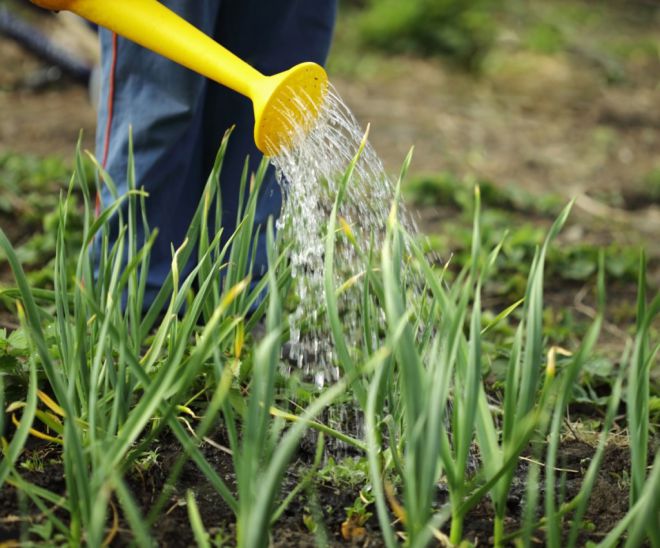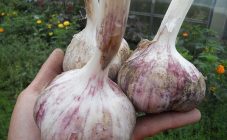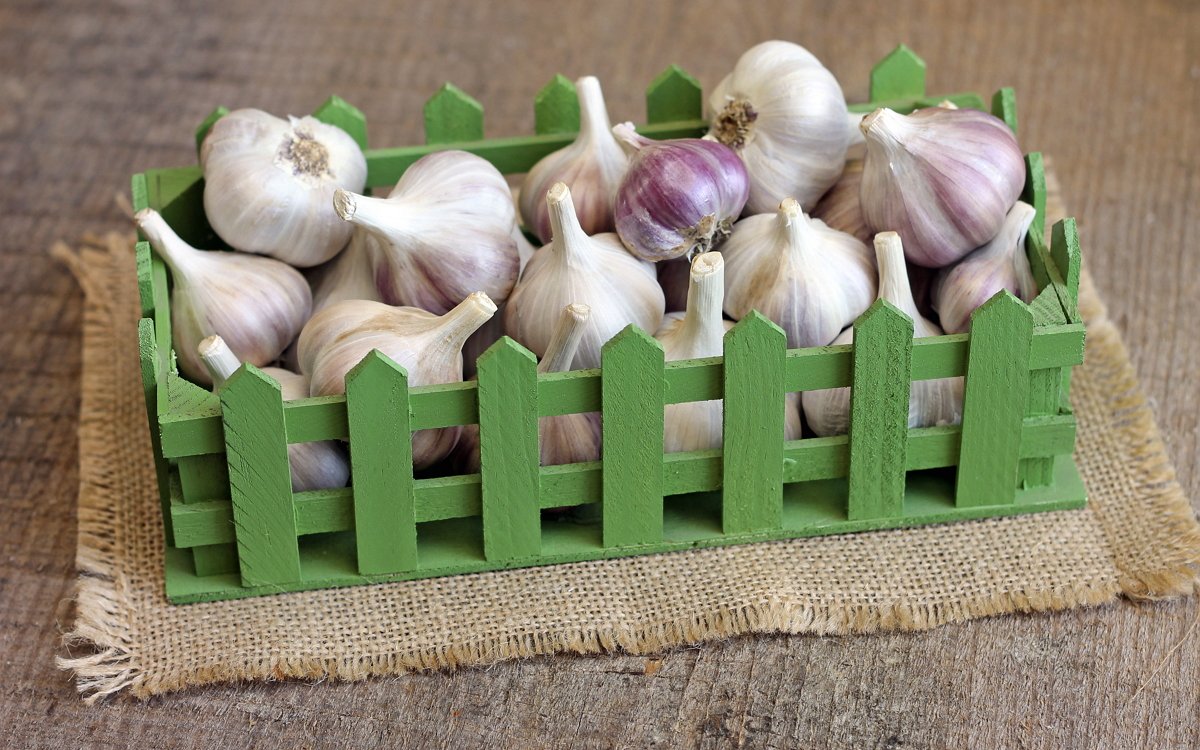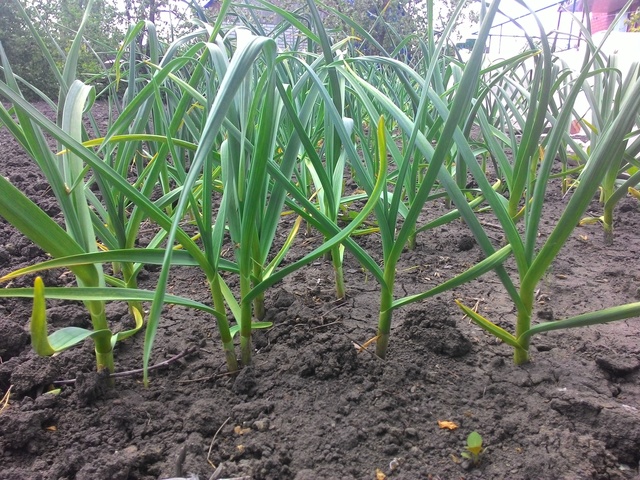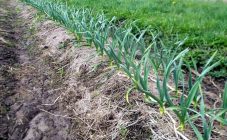Content:
Garlic belongs to a well-known type of garden crops that any novice gardener enjoys growing in his backyard beds. But not every amateur (unless, of course, he is a specialist in vegetable crops or an agricultural technician) is familiar with such an exotic vegetable as onion garlic, which has long been grown in many countries of the European continent.
At the same time, many users would like to know what an onion crossed with garlic is and what it is called. Answering the questions of interested persons, we note that this variety, which has not received recognition from the Russians for a long time, is called elephant garlic or, in other words, Rocambol garlic.
Before talking about onion in the sense of what it is, one should first note one of its properties concerning a mixture of two cultures.
This combination is very rare in nature, just by how this vegetable may look, it is immediately difficult to determine its belonging to a particular culture. The fact is that Rocambol is an intermediate species, which is a hybrid as a combination of onions and garlic, which has a wide leaf similar to it. On the other hand, the headband, divided into cloves, is very similar in shape to an ordinary garlic head (although its size is gigantic).
Garlic under the name of the onion of Rocumboll (or Egyptian) belongs to the category of "lily", about which information appeared in Russia around the 19th century. It was most popular previously in America, in the European Alps and in Asia, where the vegetable was traditionally grown commercially. Other well-known names for this variety look like this: garlic chives, Spanish onions, or purely in Russian - hairstyle.
Characteristics and description of the culture
The adult growth of this plant resembles a fleshy trunk, which has a fairly wide (up to 6 cm) and dense leaf with a rich green color. In different places where a culture is grown, its leaf can differ noticeably in its length, the value of which ranges from 80 to 120 cm.
In the middle of the summer season, a peduncle with small purple flowers resembling bells in shape (they are then collected in inflorescences in the form of a ball) appears on the garlic onion of the Rocambol species. These flowers do not subsequently bear fruit, so they are usually removed along with the arrow that appears.
The part of the plant hidden underground is a gigantic bulb, which contains from 4 to 6 cloves with a rather dense fibrous bloom. The diameter of this fruit on average can reach 6 centimeters, which in terms of weight is about 100 grams. However, with proper care, involving the use of nutrients, these indicators increase to 10 cm and 300 grams, respectively.
The time for this comes after the secondary planting of the cloves on the garden bed, when each clove forms a whole garlic head with children growing up under the bottom. The total number of the latter can be calculated from 4 to 20 pieces.
The description of this species should be supplemented with details of its taste.The taste of the giant onion of the Rocambol variety is somewhat reminiscent of onion, but, unlike the latter, it is much richer and less pungent. At the same time, its pulp looks quite attractive and does not have a very strong smell.
Agrotechnics of culture
Drop off time
The timing of planting garlic onions depends on the specific type of plant and is assigned as follows:
- Winter varieties are planted in unprotected ground with the arrival of winter (a little less than a month before the onset of frost). The exact time when it is planted depends on the climate in the region and can be appointed somewhere in September-October;
- For the so-called "spring" carambol of garlic, planting dates are selected in the period accompanying the arrival of spring (after warming up the soil to about 4-6 degrees). This indicator is most often reached around mid-April.
Thus, onion and garlic Rocambol is a versatile crop, various samples of which can be grown with significantly different planting dates.
The role of the planting material in this culture is played by the teeth or children formed under the very bottom of the head. Sometimes in this capacity, one-toothed teeth are used, obtained in the first year of cultivation of perennial garlic.
Before planting the material in the ground, the garlic cloves are carefully selected and sorted by type and size. At the same time, cloves unfit for germination are removed, due to which the plantings are more uniform. At the end of preparation for planting, the remaining slices are cleaned of scales and placed in a low concentration of potassium permanganate solution for about a day.
Disembarkation
Before planting garlic onions directly on the garden bed, it should be thoroughly prepared by loosening the top layer of dense soil, about 25-30 cm thick (for light soils, you can limit yourself to a depth of 10-15 cm). At the same time, the landing site must be cleared of weeds, stones and other debris.
The Rocambol plant is recommended to be planted on relatively "light" soils, so in the presence of loam, the soil should be well mixed with sand or peat.
During the planting of garlic, the chives are located in grooves at a distance of about 30 cm from one another (after it grows, this distance is reduced to 12-15 cm). When planting, the teeth are stuck vertically into well-moistened soil with a depth of about 10 cm.
Upon completion of the autumn planting, the soil should be immediately mulched, which guarantees its safety with the onset of winter frosts. When mulching, the soil is covered with a protective layer, 5 cm thick (it is a mixture of straw, sawdust, peat, etc.).
Care
Features of the onion type Carambol allow it to be grown in harsh conditions. This explains the possibility of obtaining a good harvest of a crop, for the seasonal vegetation of which there is a lot of time.
At the stage of active growth, alpine garlic onions need systematic watering, which are repeated every 3-4 days. After the garlic head is finally formed, the plant should be watered as needed (with strong soil dehydration).
In addition, caring for it involves constant weeding, as well as regular loosening of the soil. Otherwise, the weed can deprive it of nutrients, significantly impairing the volume of the future harvest.In addition, loosening will provide additional portions of oxygen to the soil, contributing to the development of the root system.
Like other vegetable crops, leafy Rocambol requires constant soil feeding, which is usually held several times per season, namely:
- For the first time, even before the young shoots appear, nitrogen fertilizers are applied to the ground.
- Further, in the process of growing, they are watered with an aqueous solution of a mixture of urea and bird droppings.
- Finally, during the formation of the head, phosphorus and potash fertilizers are introduced into the ground.
During the growing season of Rocumboll, one should not forget about additional mulching, which allows getting rid of weeds and maintaining normal soil moisture.
The collection of garlic is started at the moment when the lower row of leaves begins to turn yellow. This means that the heads can already be dug out and, after additional processing and drying, can be eaten.
Advantages and disadvantages
When assessing the advantages of this type, we note that garlic is, first of all, a useful garden vegetable used as a seasoning for table dishes.
The benefits of its use are also manifested in the fact that onion garlic helps people with a sick stomach (it has a beneficial effect on the mucous membrane).
In the final part of the review, it should be said that no special shortcomings have yet been found in this culture. Its advantages include simplicity of cultivation and unpretentiousness to weather conditions.

